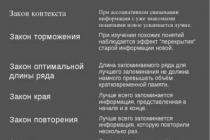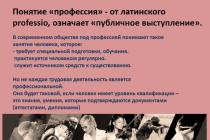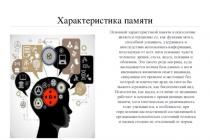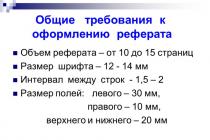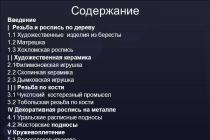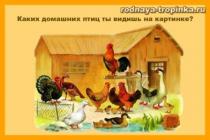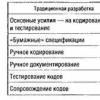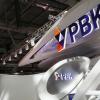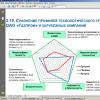LLC "Production Company" Borets "- a company in the field of production. The main products of the enterprise are submersible electric centrifugal and screw pumps for oil production, submersible and surface (horizontal) installations for increasing reservoir pressure.
Assets
The production block of the company is represented by Russian and foreign enterprises using advanced technologies, modern equipment and innovative design solutions for the manufacture of pumping units for various functional purposes.
As part of the production unit:
- LeMaZ LLC (Lebedyansky Machine-Building Plant) develops and manufactures centrifugal pumps for pumping petroleum products, piston and plunger pumps of various types and purposes, including for nuclear energy and special shipbuilding.
- Lysvaneftemash LLC (Lysva Petroleum Engineering Plant, Lysva, Perm Territory) specializes in the production of submersible electric motors and hydraulic protection of various designs and modifications.
- LLC "Kurgan Cable Plant", Kurgan, produces high-temperature power cables for powering electric submersible installations used for oil production.
- Borets-NEO LLC (Yuriev-Polsky, Vladimir Region) - production of control stations and telemetry systems.
- ZTS Cable - production various types cable and cable extension, Slovakia.
- Edmonton, Canada.
- Tulsa, USA.
- Dubai , Office 22 The Gate Building, Level 15 Dubai International Financial Center P.O. Box 121208
In Russia, there is a representative office of the company - Production Company "Borets" LLC. Address: 121467, Moscow, Moldavskaya st., 5.
The plant began its activity with the manufacture of manual fire pumps, then moved on to the production of piston and centrifugal pumps, and in 1910 the plant produced the first Russian compressor.
In 1913 the plant was already largest enterprise with 1400 employees.
For active participation in the revolutionary movement, the plant in 1922 received a new name - "Fighter". Many famous personalities worked at the plant: Anatoly Zheleznyakov- later a legendary hero civil war, partisan sailor Zheleznyak, Heroes of the Soviet Union : Zoya Kosmodemyanskaya(worked in the quality control department of the plant), Serafim Kirillovich Biryukov (turner), Ivan Ivanovich Tsapov (modeller) and Alexei Ivanovich Nikitin.
Since 1927, the plant began to publish its own weekly newspaper "Borets".
1986 The plant is experiencing a rebirth. A comprehensive reconstruction and technical re-equipment is being carried out on the basis of the latest technologies, means of mechanization and automation. A complete redevelopment of the mechanical shop for the production of compressors is being carried out with the simultaneous withdrawal of low-performance and obsolete equipment and the introduction of highly efficient machines with CNC machines of the "machining center" type of domestic and foreign production. The foundry shop is being reconstructed, construction and technical preparations are underway for the commissioning of a new compressor test station. Reconstruction work is carried out without stopping production with a simultaneous increase in output and development of new types of products. To process one of the basic parts of the compressor - the frame, a line of frames for opposing compressors was organized, in which modular and special machines are equipped with multi-tool adjustments. Special circular milling machines with CNC provide an increase in productivity in the processing of connecting rod journals of the crankshaft by 5-6 times compared to turning. The factory was introduced in commercial operation APCS subsystem " operational planning, accounting and production management".
In 2010, the plant was renamed into JSC Compressor Plant Borets, and this milestone in the history of the enterprise is associated with a significant expansion of the range of products produced. The equipment fleet has been updated foundry with the commissioning of an American induction furnace, which significantly improved the quality of castings.
Awards
In 1942, the staff of the Borets plant was awarded Order of the Red Banner of Labor for the release of rockets for "Katyusha" and mines for mortars of large calibers in years Great Patriotic War.
In 1947, in commemoration of the 50th anniversary of the founding of the plant and the successful fulfillment of government tasks for the production of new machines for the oil industry, the team was awarded Order of Lenin.
Nomenclature
In 1910, the plant developed and manufactured the first Russian compressor.
In 1933, on the instructions of Sergo Ordzhonikidze, the plant mastered the production of K-165 oxygen compressors.
For the first time in the USSR, the plant created its own design of a vertical two-row compressor, developed a single series of machines of this type based on the unification of components and parts. These are type 2C compressors, which have been gradually changed and improved.
In 1952-1958, under the leadership of the chief designer V. A. Getye, angular-type compressors were developed at the level of the best foreign models. For high technical and economic indicators and quality, these angle compressors were awarded State quality mark of the USSR.
1967 For the first time in the country, compressors have been developed without lubrication of cylinders and seals, which make it possible to obtain compressed air without oil impurities. Such compressors subsequently receive the name "dry". The symbol "C" is added to the equipment designation (for example, 3S5VP-16/70 or 2VM4-12/65S). "Dry" execution allows to apply the compressor to compression of explosive gases.
The Borets plant was a pioneer in the design and development of a number of vertical and then angular compressors, in the mid-70s - a number of boxer compressors of medium and small bases.
Starting in 1977, the plant began to produce a boxer car on a two-row M40-2 base. Traditionally high level of engineering and working personnel allowed us to design and master in a short time the production of a whole range of compressors.
Started in 1987 mass production compressor 2VM4-8/401, designed to compress air.
In the 1990s, the nomenclature series of gas and air reciprocating compressors on 2P bases (compressors such as 302VP-6/18, 302VP-6/35, 302VP-10/8, 302VP-5/70, 402VP-4/220, 402VP-4/400), 4M (2VM4-24 /9, 2VM4-27/9, 2VM4-15/25, 2VM4-13-36, 2VM4-12/65, 2VM4-13/71, 2VM4-9.6/161, 2VM4-8/401, 2VM4-36 /9) and 5P (305VP-30/8, 305VP-20/35, 305VP-16/70, 505VP-20/18).
In 1999, the plant began production screw compressor"Storm" installations - highly reliable units, the resource of which exceeds domestic analogues. Storm compressors have proven themselves in the coal industry, oil production (used on drilling rigs) and other industries National economy. Compressors brand "Storm" are registered trademark.
In 2001, the plant began production of modular compressor stations VKU KS based on screw compressors "Storm". The stations are equipped with all the necessary life support systems, fire extinguishing, lighting, ventilation and alarm systems and are manufactured in the dimensions of a standard railway container.
In 2004, the plant began production of modular air and gas compressor stations of the MKS series based on mass-produced reciprocating compressors of its own production.
In 2008, the Moscow Compressor Plant "Borets" was moved to production facilities OJSC "Compressor Plant" in Krasnodar(in 2010, the plant was renamed into Borets Compressor Plant JSC) and, thus, expanded the list of manufactured products for the following bases of reciprocating compressors, mass-produced at the Krasnodar plant: 3P (VP3-20/9, 3GP-12/35 , 3GP-5/220), 2.5M (2VM2.5-6/101, 2VM2.5-9/101, 2VM2.5-9/220, 2VM2.5-5/221, 2VM2.5-14/ 71, 2GM2.5-5/200S), 4M2.5 (4VM2.5-14/101, 4VM2.5-10/220), as well as the largest frame of the entire range - 7P (7VP-20/220, Vp-50/8M). In addition, the plant produces unique mobile, portable and stationary (AMU) nitrogen and air modular stations of the SDA (SDA-5/220, SDA-10/101, SDA-10/251, SDA-20/251) and SD (SD- 9/101, SD-9/220, SD-18/101, SD-18/251).
The use of compressors from the Borets plant
When laying the tunnels of the Moscow metro, powerful air compressors and pumps from the Borets plant were used.
The oilmen operate mobile compressor units SD-9/101, created in the design bureau of the Borets plant and put into mass production at the facilities of the Borets Compressor Plant OJSC.
Compressors manufactured by the Borets plant are used in all industries.
Links
Sources
Moscow at the beginning of the century / ed.-comp. O. N. Orobey, ed. O. I. Lobova. - M.: O-Master, 2001. - S. 118, 134-137. - 701 p. - (Builders of Russia, XX century). - ISBN 5-9207-0001-7
Piston compressors. Volume 1. Theory and calculation / ed. P.I. Plastinin. - M.: Colossus, 2006 - 456 p., 3rd edition -
The Moscow Compressor Equipment Plant is one of the oldest enterprises in our country. Their products have been used in many areas.
Compressor equipment "Borets" is famous as a durable and reliable equipment, which is in no way inferior to imported analogues, and in many respects surpasses it.
Stationary compressor units Borets
Stationary compressor units of various types (screw and piston) are designed to compress various gases: from atmospheric air to explosive gases. Compressor units are fully automated and ready to start. The installation necessarily includes: a compression module (screw or piston compressor), a cooler for each compression stage, engines (electric motor or GPA), ballasts, instrumentation and automation. In the basic version, the compressors are suitable for operation in a heated room or outdoors at an ambient temperature of - 45°C to + 45°C. Screw compressor units are mounted on a flat surface and do not require the preparation of a special foundation. Reciprocating compressor units require foundation preparation only for the compressor.
|
Designed to supply compressed air as an energy source for technological processes. They are used in almost all industries. |
Storm units are designed to compress atmospheric air, operate in automatic mode, and are manufactured using imported components. |
|
Applied in technological processes where compression of various gases (except air) is required, including aggressive, poisonous, explosive, inert and toxic. |
Designed for compression natural gas up to a pressure of 250 atm. and subsequent refueling of cars and mobile tankers (PAGZ). |
Mobile compressor stations
Mobile and portable compressor stations Borets designed to operate in a wide temperature range, designed for operation in all climatic zones. Mobile compressor stations are designed for long, uninterrupted service in the most difficult operating conditions. Modern system automation of the compressor station provides the minimum time to reach the operating mode and ease of maintenance. All station equipment is mounted on a single platform and is highly resistant to vibration and shaking when traveling off-road.
As a drive equipment stations are used power plants based on diesel engines of the world's leading manufacturers - YaMZ, CATERPILLAR, Deutz, etc. current stage the possibility of using gas piston engines is being developed.
Mobile nitrogen compressor stations are highly efficient, extremely reliable systems for the production of nitrogen from atmospheric air and subsequent compression of an inert gas mixture, with nitrogen purity from 90 to 99.95% and are recommended by the Gosgortekhnadzor of Russia to ensure fire and explosion safety.
In the configuration of the stations, components of domestic and foreign production that have proven their reliability are used.
At the request of the Customer, the stations are equipped with various additional equipment: autonomous air and pre-start liquid heaters, fuel heating systems, power plants based on domestic and imported diesel engines, an electronic fuel consumption control system, a chassis GPS navigation system, it is possible to manufacture the station in a "tropical" version and much more.
We also offer:
- (spare parts for compressor)
Any compressor for long and reliable operation must consist of high-quality and durable parts. High pressure and power on the equipment often disable it. That is why in great demand enjoy additional or spare parts for compressors. It is important to know that some models of equipment may differ in their constituent elements. That is why you should purchase parts suitable for a particular brand. If you have a BORETS compressor, then in this section you can order almost all existing spare parts for it. This page contains a large table with the designation of all possible parts for this compressor, which are necessary when repairing equipment.
We guarantee the high quality of every detail, because we supply only original items. Of course, we cannot promise ridiculous prices, as all parts have been rigorously tested for quality and reliability. But does it make sense to buy parts for the compressor "from hand" from dubious sellers? low prices, if there is no certainty and guarantee that they will not break the next day. That is why we offer our clients big choice spare parts for BORETS compressors at average market prices, but of very high quality. In this section you can find only original parts that are designed specifically for this brand of equipment. In addition, our online consultants will provide all the necessary information and help you choose the right item.
A wide range of spare parts is presented in the form of belts and pulleys, pressure and temperature sensors, air and oil filters, valves and other parts necessary for the operation of the BORETS compressor. When choosing the necessary elements, the client can use the individual documentation for his equipment model or ask our experts. We individually approach each client and help to select the necessary elements, as well as advise on issues regarding replacement with similar products. As you know, each compressor model may have its own hallmarks, due to which some substitutes from similar equipment may simply not be suitable. And improper installation of parts, in turn, can lead to equipment inoperability, deterioration in its performance or breakdown.
In the late 1890s, a plot of land near Butyrskaya Zastava was acquired by Gustav List, where convenient routes for the Nikolaevskaya and Vindavskaya branches were laid. railway. He ordered the architect N.D. Strukov the project of his new machine-building plant. Gustav List at the end of the 19th century became one of the leading manufacturers of pumping and fire fighting equipment. He was born in Germany in a large family. In his youth, he left to seek his fortune in America, and in the middle of the century he came to Russia to his older brother, who set up factories in the south of Russia for “cutting” large sugar “heads”. The future machine-building magnate earned his first money precisely on sugar.
In 1863, he founded his first workshop in Moscow for the production of pumps and fire equipment on Petrovka. In 1874, when it burned down, he moved closer to the water and set up a factory and a family estate opposite the Kremlin on Sofiyskaya Embankment. This is how the famous mechanical factories of Liszt were born. The range of their products was very large: fire pumps, mill and other pumps, barrels on horse-drawn vehicles, steam engines, chemical fire extinguishers, fire hoses and other small equipment, equipment and pipes for water towers of railway water pumps throughout transport network Russia, water pipelines and oil fields, cast-iron sewer manholes, pneumatic sirens and much more. Liszt was the first in Moscow to make a fire truck with a sliding ladder and a fire motorized rubber. For the naval department, he supplied turbines, pumps, pumps. By 1897 the firm was transformed into Joint-Stock Company iron foundry, mechanical and machine-building plants, whose board, in addition to Gustav himself, included his two sons Nikolai and Alexander.
For the construction of a new machine-building plant in Butyrki, a loan was taken from Deutsche Bank. But in 1896, G. List took Russian citizenship, and the Bank sued all of his bills. There was nothing to complete the plant. The eldest son of Gustav Ivanovich Nikolai by that time had favorably married the granddaughter of Maria Fedorovna Morozova Elena Grigoryevna Krestovnikova, and she helped the Lists complete the construction of the plant. Thus, new plant became the brainchild of Nikolai Gustavovich, who became its first director, and was called the "Butyrka Machine-Building Plant of Gustav List". The first building designed by N.D. Strukov was commissioned in 1898. By 1909, according to the project of N. D. Polikarpov, another workshop, a warehouse and a hospital were built. At first, manual fire pumps were manufactured at the plant, then the production of piston and centrifugal pumps was launched, and in 1910 the plant produced the first Russian compressor.
After the revolution in 1922, the plant received a new name "Compressor plant" Fighter "for the fact that its workers actively participated in the revolutionary movement. Many famous people worked at the plant - the sailor Zheleznyak (Anatoly Zheleznyakov), Zoya Kosmodemyanskaya ...
In 1986, a comprehensive reconstruction and modernization was carried out at the plant, CNC machines were put into operation. Since 2008, production has been transferred to Krasnodar to the Krasnodar Compressor Plant, which since 2010 has been called "Fighter".

